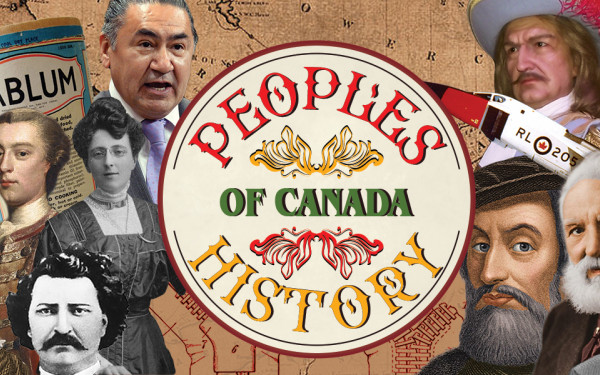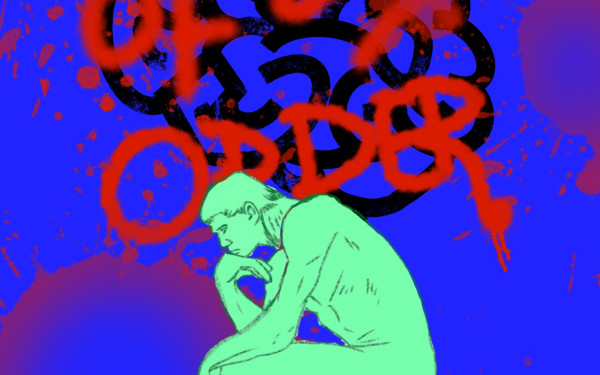This Isn’t the First Rise of the Far-Right in Canada
A People’s History of Canada Column
“Those who cannot remember the past are condemned to repeat it.’’
This often repeated, posted, and talked about saying was first made popular by American philosopher George Santayana. Looking at the return of “mainstream’’ fascism today, it’s a wonder we learn anything at all.
In the late 1920s and early 1930s, fascism was on the rise all over the world, for a variety of social, economic, and political reasons like communist fear, post-war instability and upheaval, and later the Great Depression. While the most famous were Nazi Germany and Mussolini’s fascists, these were absolutely not the only places where fascist thought gained popularity. Movements sprung up in the United Kingdom, the United States, and in many Eastern European countries as well as Spain and Portugal. Of course, Canada wasn’t exempt from that list.
With the fascists came those who opposed them and their views: the anti-fascists. Today we often call them antifa, but they’ve always had the same goals in mind: quash fascists by any means necessary, wherever necessary.
Fascist groups sprang up all over the country during the interwar period: The Canadian Union of Fascists were based in Manitoba, and in the east Ontario was home to Swastika Clubs. Most prominently, in Quebec, was Adrien Arcand’s Christian National Social Party.
Arcand started his career as a journalist, editing and publishing a litany of anti-Semitic and anti-Communist publications after being fired from La Presse. He soon launched himself into politics, and formed the National Social Christian Party in 1934, following a similar naming scheme to Germany’s Nazi party. He even called himself the “Canadian Führer.”
Inspired by British fascist Henry Hamilton Beamish and his “Madagascar Plan” (a judge described Beamish as an “anti-Jewish fanatic” in one of the several libel and treason counts held against him during the 1930s and 1940s), Arcand planned on uprooting and sending Canada’s Jewish populations to the then-wild Hudson Bay.
While Arcand found support inside and outside of Canada by writing one of his fascist newspapers, Le Patriote, and was well liked by the Canadian Conservative Party members including party leader and eleventh Canadian prime minister R.B. Bennett, this paled in comparison to the growing opposition to fascism all over Canada.
Following the launch of his own party, Arcand aimed for bigger. He felt himself a big fish in a small pond. He thus went on a small tour outside of Quebec to “test the waters’’ of his ideals in other provinces. He was successful, too—garnering support from fascists in Western Canada. His plan was now to create the pan-national unity of all “real Canadians” (no more petty squabbles between English and French was one of his biggest ideals).
In 1938, Arcand aimed for bigger still. He was named leader of the National Unity Party of Canada, which came from the fusion of his Christian National Social Party, small time nazi clubs like Toronto’s “Swastika Clubs,” and Ontario’s National Party. The goal now was to get elected to the federal level and continue the spread of fascism in the Western Hemisphere.
“It wasn’t all golden for the anti-fascist movements, however. As Canada battled against fascism overseas, the anti-fascist organizations it was home to were outlawed as well.”
He held many rallies, but instead of garnering more and more followers, it attracted large amounts of opposition. One such rally was famous not for the 1,000 people who listened to Arcand speak in Toronto’s Massey Hall, but rather for the more than 12,000 who attended an anti-fascist and anti-nazi rally less than a kilometre away at Maple Leaf Gardens, organized by one of Canada’s largest groups of left-wing and communist anti-fascists, the League Against War and Fascism.
Jewish communities in cities like Toronto and Winnipeg also organized against these Nazi groups, as did Communist groups, such as the Communist Party of Canada.
The Canadian government eventually stepped in, using the Defence of Canada Regulations, a policy enacted a week before Canada joined the Second World War that permitted the waiving of Habeas Corpus (the right to trial) and gave the Canadian government the right to intern people. It is the same policy that was used to intern Japanese-Canadians. Arcand was detained throughout the duration of the war and the National Unity Party was banned.
After the war and his release, Arcand continued politics. Unfortunately for him—and fortunately for basically everyone else—fascism had fallen out of favour in the mainstream, and Arcand lost most of his following after Second World War.
It wasn’t all golden for the anti-fascist movements, however. As Canada battled against fascism overseas, the anti-fascist organisations it was home to were outlawed as well, as was the Communist Party of Canada, due in part to the non-aggression pact between Hitler and Stalin signed prior to the Second World War. Members of the Communist Party were placed in internment camps before fascists were.
Following his release at the end of the war, Arcand turned to Holocaust denial and raced in federal elections twice, in 1949 and 1953.
He kept active in the fascist spheres until his death, mentoring new “up and coming” neo-nazis such as one Ernst Zündel, who in the 80s and 90s was famous in Canada for his publishing of Holocaust denial pamphlets and books as well as his very open spreading of anti-Semitic propaganda. Zündel was eventually deported to Germany in 2005, where he spent time in prison for for “inciting racial hatred” before he died last August.
Meanwhile, anti-fascists were still fighting back against the small fascist resurgences that would would occasionally pop up in the years following the war. In 1965, one neo-nazi rally in Toronto which attracted all of eight people was met with a counter demonstration of around 4,000 people, some themselves survivors of Nazi atrocities. In the 80s and 90s, groups like the Anti-Racist Action organized in the North East and Toronto to quell anti-Indigenous and anti-immigration far-right groups. And of course, today anti-fascist organisations are taking action against the fascist, far-right groups that are springing up.
Fascism and its many resurgences are nothing new, and Arcand was not the only fascist in Canadian history. What him and other fascists of the past and present share is just that: they’re fascists, no matter if they are the blue shirt wearing proto-nazis of yesterday or the Twitter troll Holocaust deniers of today.


_600_832_s.png)




